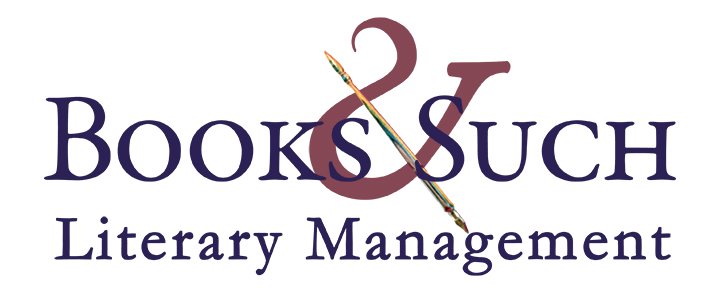Guest blogger: Meagan Briggs
From Janet: Come on in, we’re about to have some fiction fun! Books & Such is teaming up with Splickety Prime, a quarterly magazine that specializes in flash fiction. Joining us as a guest blogger is the mag’s editor, Meagan.
Here’s the plan: Today Meagan is going to introduce us to flash fiction. Tomorrow she’ll announce a flash fiction contest that you all get to enter along with other flash fiction fans. Cool prizes will be handed out.
When the top ten finalists are chosen by Splickety’s staff, we’ll announce them to you on our blog. How cool would it be if one of our commenters won!?
Now, what’s this thing called Flash Fiction, Meagan?
Flash Fiction. It’s fun to say, but what is it really?
If you’ve heard about Splickety or been within ten feet of one of our staff, it’s beyond likely that you’ve heard the term flash fiction. (It’s okay to admit if you’ve even tried saying it three times fast.) If you’ve wondered what we’re talking about, I’m here to tell you what flash fiction is and how you can put it into practice.
Along with alliterative terminology, we also have a penchant for lightning symbols. It’s no coincidence. Flash fiction, like lightning, should be as powerful as it is fast.
Essentially, flash fiction is a complete story in 1,000 words or less. Break it down even more and you have micro fiction, which is a story under 300 words, and nano fiction, which caps out at a mere 100.
Flash fiction’s fundamentals, outside of word count, boil down to the same ingredients as a novel: well-structured plot and three-dimensional characters. These are essential to good storytelling, no matter the word count. But develop these elements in 1,000 words or fewer, and you’re wielding lightning.
Let’s take a closer look at these three flash fiction fundamentals.
- Plot—Something Has to Happen
Like a novel, flash fiction absolutely needs structure. A beginning that hooks readers’ attention, a middle that shows the characters in turmoil, and a resolution that satisfies.
Essentially, something has to happen. A story can start with a man watching paint dry. But it had better take a fast turn. For example, the wall explodes, the man gets arrested, or the drying paint reveals a code. End the scenario without any change or progress, and all you have is an insomnia remedy.
Because there’s often no room to expound on backstory and exposition—especially in nano fiction—it’s hard to know where to start a story. A helpful rule of thumb is to think of flash fiction as a snapshot. A snapshot put into motion.
Imagine a novel boiled down to one essential scene. Very likely, it will be the climax of the greater story. That’s your snapshot to bring to life. Flash fiction illuminates for readers only what is important about how the characters got to where they are, while driving the story forward through conflict so that the characters can overcome.
- Characterization—Make Readers Relate
Even with a stellar plot, flash fiction will be lacking if it doesn’t have 3D characters. Just as a plot is pointless without conflict and tension, a character is only a cutout put into motion until readers can see the internal struggles. (Tweet this.) For example, a character struggling to keep the bank from foreclosing on his house might also be facing the fear of failure or the need to prove wrong every person who said he’d never amount to anything. The external conflict relates with the inner struggle.
The character should also always have a goal, or at least a want. Without that driving force, things are simply happening. A character who moves forward, compelled by a necessity/goal/want/desire, and complicated with inner conflict, is active, multifaceted, but most importantly, relatable.
- Word Count—Every Word Matters
“But how do I do all that with so few words?” you’re probably thinking. The secret? Make sure every word pulls double- or triple-duty. If you need to describe a person’s age and appearance, find a word or phrase that can do both. Drop unnecessary words like very, much, almost. Same goes for most adverbs. Pick strong nouns and verbs. Focus on the essentials. Kill two birds with one stone by incorporating description into the action. Oh, and cut out clichés like the one I just wasted six words on in the previous sentence.
Editing is another great tool. Sometimes, it’s helpful to write a story without considering word count, and then hack it down like a butcher. Even after the fifth or sixth edit, you can still find things to cut. Flash fiction doesn’t have to be bare bones, but it does have to be lean.
Ultimately, it’s not a matter of how many words you fit in. Often, it’s a matter of how few the story needs, especially in nano fiction. Take Hemingway’s ultimate short story for example. In only six words, he constructed three-point structure, demonstrated backstory, implied characters, and evoked reader sympathy. The story? “For sale: Baby shoes. Never worn.”
Less really is more.
Flash fiction is the most fun you can have on one to two pages of paper. I can guarantee when you’ve constructed a tight plot and dynamic characters in fewer words than a blog post, back cover of a book, or even a tweet, you’ll feel like a wielder of lightning.
Meagan Briggs is the editor or Splickety Prime, a quarterly magazine which specializes in flash fiction. Her optometrist has never diagnosed it, but she sees the world differently from how it really is. The only cure Meagan has found is to write down every what-if and give it a story. She’s not considering any other remedies.
You can connect with Splickety via splicketypubgroup.com or with Meagan via her website at meaganbriggs.com.

I participate in a weekly flash fiction contest, and have found that it’s sharpened my writing in other respects. Each piece I’ve submitted bar the first has been part of a larger whole, which – should I live long enough, and there’s the rub – will eventually be novelized.
* One thing I have noted is that overediting is something of a danger. It’s something like the way a machine works; there has to be some slack allowed. I once designed a frame for the testing or a rather large section of a bridge for CALTRANS, and it was built to my precise specifications, with the result that when the load (about 400,000 pounds) was applied, the thing locked up against the tolerances with a heart-stopping groan.
Good advice, Andrew. Aiming for complete word control can destroy the art in the piece. It is, indeed, a challenge.
Good point, Andrew. It is definitely possible to edit the life out a piece.
What a fun proposition! Makes my fingers and mind tingle just to think about it–especially surprising since I belong to the Wordy Club. Thank you, Meagan and Janet for presenting this stimulating information that I hope will exercise the flab from my writing.
Rachael, you may consider it Word Boot Camp.
I so appreciate the way you outlined what flash fiction needs to make it good, Meaghan. I’ve only tried once to write flash fiction (when I was a very newbie writer). It was fun, but I had no clue what I was doing. 🙂 Your suggestions help.
Does Splickety run contests regularly?
Jeanne, I tried once about two years ago … but I just didn’t realize it was flash fiction. Because I was new to fiction writing, all I did was embarrass myself. 🙂 But … then again, I learned a lot … so there’s a plus. 🙂
We do run contests regularly, Jeanne. Each of our imprints (Havok, Splickety Love, and Splickety Prime) have a contest issue once a year, in addition to special contests like this one. Each contest corresponds with that issue’s theme. Next year’s themes/contest issues are listed on our website (splicketypubgroup.com). We hope you’ll consider entering!
I love that Hemingway quote. Shows you what is possible. Hmmm…what to write, what to write…
Glad you’re considering entering, Kristen! Stay tuned for tomorrow’s post, which will give a general theme. Might help you zero in on what to write. 🙂
Thank you for sharing today, Meagan. I was just vaguely familiar with flash fiction because of Andrew. I know when I write magazine articles, and I’m limited to 1,000 words, I have to be careful. There will be a topic for that month … and I have to work hard to keep to that topic. Not stray. It’s amazing all the extra words we throw in that aren’t necessary … the editing part is fun for me. 🙂
Yes, someone else who finds editing fun! 🙂
Sounds fun! I’d like to try flash fiction with a few of my novel characters.
Great idea, Jenny. It would be an excellent exercise, and it’d be fun to see what you learn about your characters along the way.
What a cool idea, Jenny! Perhaps you could put it on a dedicated page on your (way cool) website, and call it ‘Meet My People”?
* One of the nice things about #BlogBattle is that the flash fiction is keyword-driven, so it presents a focus that I would not necessarily have chosen (I mean, build a story set around a Marine tank crew in VietNam around ‘orchid’?). But the advantage of the externally-applied structure thus implied is that I have to really think about what these chaps are going to be doing, and it’s given nuance to their individual characters that I think might have been lacking otherwise.
Thank you, Janet and Meagan, for the great how-to information on writing flash fiction. So far I’ve only dabbled with short stories, but it’s something I’d love to learn, do, and publish.
Blessings ~ Wendy
Flash fiction is my favorite way to break up writer’s block. Even if I don’t enter that particular contest, the challenge of the perimeters gets my brain churning with ideas. I’ve even been able to work flash fiction stories into my WIP as a scene or chapter.
Splickety Magazine tops the list of my favorite publications. The brilliant editors make my writing shine, and I’ve enjoyed working with each of them. I recommended flash fiction to my Word Weavers critique group. The skill honing process of crafting tight work offers vital benefits to a writer’s development.
And it’s working with writers with your enthusiasm that makes our jobs as editors extra rewarding, Tina. 🙂
Thank you, Janet and Meagan, for the tips for writing flash fiction. It’s an intriguing — and challenging — idea, and I’m curious how I might incorporate it into a novel. Can’t wait to hear the details of the contest tomorrow!
This is going to be such fun! I can’t wait to read the finalists. My guess? Flash fiction is like poetry– some of the most difficult and challenging writing ever. But our Books & Such community is up to the challenge, right?
I’ve always wanted to try, but never have. Maybe…
Oh, my word! This is a challenge I can’t resist, even though I’ve never tried nano fiction. Here goes! ;p
I’m new to flash fiction. I’ve been writing for the better half of my life,just for my friends and family to read. The problem is I don’t know if I can write a complete novel in 1000 words, but I’m ready to give it a shit. Maybe flash fiction will make me aware of the missing things in my book. Anyways, I want to be another Jane Austin.
I need help in my writing career. I’m new to flash fiction,and I need all the help I can get. I will definitely be competing soon. I hope to be one of the winners, because….I like to believe that I’m another Jane Austin.